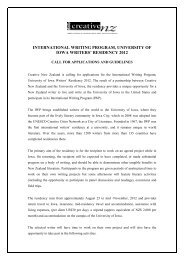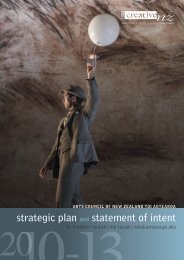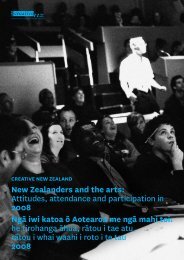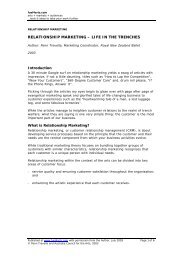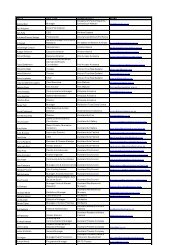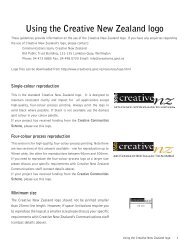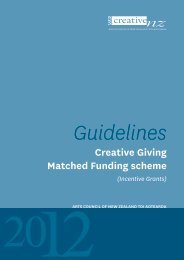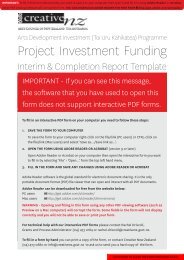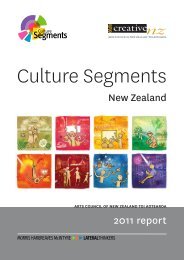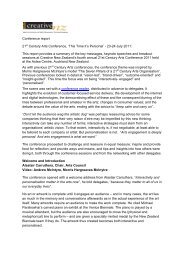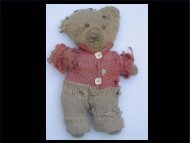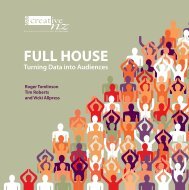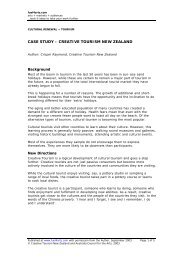Smart Arts - Creative New Zealand
Smart Arts - Creative New Zealand
Smart Arts - Creative New Zealand
- No tags were found...
Create successful ePaper yourself
Turn your PDF publications into a flip-book with our unique Google optimized e-Paper software.
Your venue should be able to supply some good advice on where and when to advertise.Depending on your budget, you may also choose to advertise in suburban papers butmake sure you’ve covered the basics before you start spreading out.Magazines tend to have a national circulation and therefore a broader reach thannewspapers. This makes it more difficult to do targeted advertising through magazines.Most magazines work to a deadline ranging from a few weeks to a few months out fromthe publication date.Some magazines can also take inserts of your flyer although this can be costly. A costeffectiveapproach is to find out if the magazines can break down their circulationgeographically, then have your insert placed in relevant regions only.One way to target your advertising is to place an advertisement or insert in an industrymagazine: e.g. you may choose to promote a dance show in Dance Aotearoa <strong>New</strong><strong>Zealand</strong>’s (DANZ) magazine. Such a magazine will be read primarily by other people inthe industry, who are likely to hear about your show through word-of-mouth anyway. Aneffective way to advertise in an industry magazine is to alert this target market that yourshow is coming up and offer an incentive to book early.When you’re arranging newspaper or magazine advertisements, find out from theadvertising department how to supply the advertisement.4Radio advertisingIn general, achieving effective radio coverage requires a substantial budget. However, astation may agree to sponsor your advertising schedule in return for complimentarytickets and/or placement of its logo on your print and advertising material.Radio stations have comprehensive statistics on their listeners so make sure they matchyour target market before advertising with them.Most radio advertisements are 30-second spots.Points to remember:• write the copy yourself and then let the station’s creatives look over it• don’t try to get across too much information• your public should be able to respond easily to the advertisement. A URL or an 0800number is excellent for this, or a familiar ticketing agency listed in the phone book• make sure you clear your music copyrights (contact Australasian Performing RightsAssociation in Auckland (Tel: 0800 NZ APRA [69 2772] Website: www.apra.co.nz)• use music and repetition• always close the advertisement with what, where and when• emphasise something listeners will recognise such as a star’s name• read your radio advertising copy aloud: it’s written to be heard, not read• ensure any words in te reo Mäori and other languages are pronounced correctly,particularly if you’re trying to appeal to audiences from those communities.Another way to get mentioned on the radio is with on-air give-aways. Be sure to supplyvouchers that people need to book with rather than supplying tickets. This way you’reassured of their attendance and it also means they can book a date that suits them toattend. By limiting the term of the offer (e.g. the first two performances) you’re ensuringearly word-of-mouth.<strong>Smart</strong> arts | Toi huatau40



